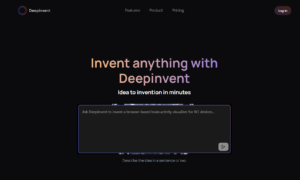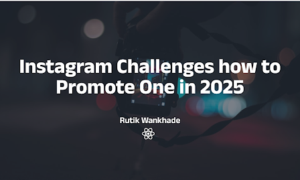Much of the hype around generative AI focuses on written content, but tech’s ability to create and manipulate visuals is likewise commanding attention – and also rapidly changing industries.
Video and photo editing has traditionally been a time-consuming task, and often a specialist needed to be recruited to create high quality concepts and assets. AI-driven tools have been speeding up the process and aiding creativity, but this effect has been difficult to quantify.
An ambitious new report entitled The Creator Economy: Navigating Brands, Technology and Innovation provides some interesting insights into just how disruptive AI has been. The report was compiled by Lightricks, a leading provider of advanced video and photo tools, in collaboration with YouGov.
In recent months, the team surveyed 1000 people in the United States who are either already professional content creators or aspiring content creators. “Content creator” has, of course, been a difficult term to define, so for the purposes of this survey, it encompasses anyone who edits and shares photos or videos online, as a way to generate income.
The data may surprise you with how far along the use of generative AI is amongst content creators.
Most creators already use generative AI
Generative AI is no longer the future for creators but the present. About 92% of creators are already strongly familiar with AI, and 62% are already using it.
This means that when you scroll through your Instagram or TikTok feeds, you’re highly likely to see some content which has been AI-assisted if not completely AI-generated. Different creators are using the new capabilities for different functions, but here are some of the most popular use cases for AI image generation:
- 53% for creating backgrounds used in photo content
- 47% for creating backgrounds used in video content
- 46% for creating “AI avatar” profile photos
- 42% for creating clothing and looks
These tasks might have taken a creator several hours manually, or they might have decided the time investment was too high and instead decreased the quality of their content instead. The fact that AI-generated content is so widespread means that social media users should notice greater professionalism from up-and-coming content creators in particular.
Apparently, AI can indeed create art
While many creators are using AI already, even more are open to the idea, with several motivations ranking highly. Interestingly, people are thinking not just in terms of efficiency and budget savings but also in terms of producing higher quality content.
The most popular motivation to use generative AI, according to the survey, is actually creators feeling confident that AI would positively impact their creative process. Approximately 86% of respondents agreed with this statement, while 84% are motivated by the potential for AI to save them money or time.
Creators can use text-to-image technology to type what image they want to be created, for instance, essentially giving them a baseline which they can then edit to wherever their own creative process takes them.
Perhaps surprisingly, 64% of creators believe that AI-generated visuals can be considered art. This sentiment is critical when it comes to continued adoption, because for those driven by creativity, AI can’t be seen as being at odds with the spirit of what they are trying to do.
Given that 56% of creators apparently create content for their own businesses or for other brands, the time and cost savings become particularly important from a business scalability perspective. It improves their profit margins and the value they can produce per hour.
Deepfakes worry creators
Of course, there are also common concerns amongst creators when it comes to generative AI and the future.
The greatest worry is about potential deepfakes, with 74% of creators sharing this concern. Essentially, deepfakes are when people use AI to realistically impersonate others and attempt to pass off their creation as the real person. Recently, an AI-generated image of Pope Francis wearing a Balenciaga jacket went viral, as people believed the image was real and were startled.
As the second most popular concern, 58% are worried about copyright infringement. This is a particular concern for artists, as their images can be used by large models to generate “unique” yet derivative AI images, while they are not compensated.
The final major concern was surrounding a decrease in authenticity, with 57% saying that they aren’t sure AI-generated images are their own creations. With AI, it becomes harder to separate reality from fiction. However, 71% of creators found their followers reacted positively to AI-generated content with only 10% reacting negatively.
It’s important for Lightricks and other major companies in the visual content space to understand their responsibility in these areas, and research such as this report can help ensure that they are well informed.
Summary
Generative AI has taken the content creation world by storm according to the The Creator Economy: Navigating Brands, Technology and Innovation report. A majority of creators are already using the new technologies and even more are open to using them in the future.
Upon the release of the new report, Lightricks CEO Zeev Farbman said that “The emergence of AI, more sophisticated tools, and increased creative economic opportunities signals a new era of unlimited possibilities. With innovative technologies and the boundless imagination of creators, the future is bright and full of potential for those who are willing to embrace it.”
Some concerns remain about the use of technology, but so far the reaction from brands, creators and media audiences has been overwhelmingly positive. This is a rapidly evolving space, and it will be fascinating to see the shifts continuing over the coming years.

































